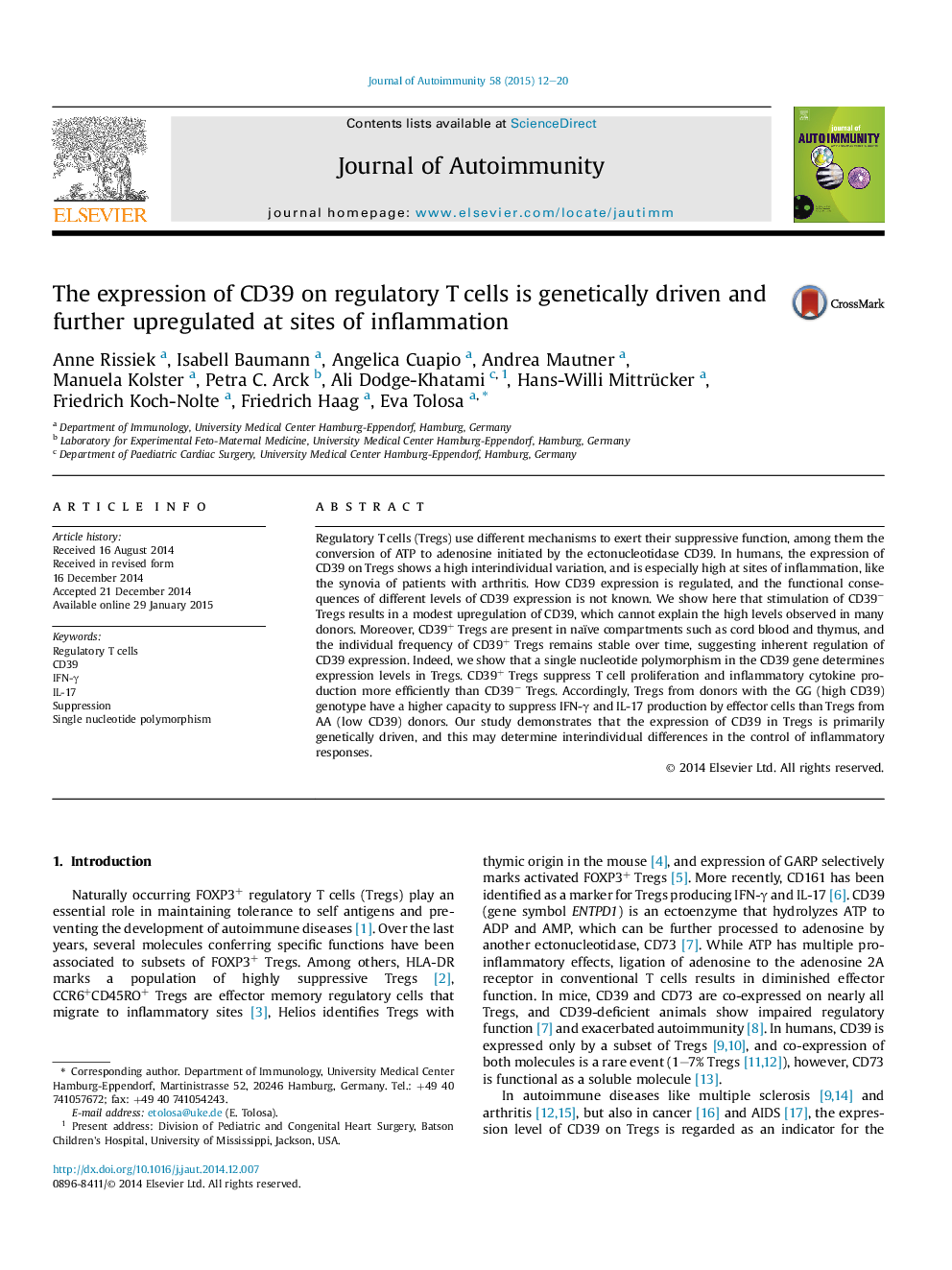| Article ID | Journal | Published Year | Pages | File Type |
|---|---|---|---|---|
| 3367732 | Journal of Autoimmunity | 2015 | 9 Pages |
•Tregs expressing CD39 are potent suppressors of IFN-γ and IL-17 production.•CD39 Tregs are increased in the synovia of patients with juvenile arthritis.•A SNP in the ENTPD1 gene determines CD39 expression levels in human Tregs.•The GG genotype at rs10748643 is associated with better control of IFN-γ and IL-17.
Regulatory T cells (Tregs) use different mechanisms to exert their suppressive function, among them the conversion of ATP to adenosine initiated by the ectonucleotidase CD39. In humans, the expression of CD39 on Tregs shows a high interindividual variation, and is especially high at sites of inflammation, like the synovia of patients with arthritis. How CD39 expression is regulated, and the functional consequences of different levels of CD39 expression is not known. We show here that stimulation of CD39− Tregs results in a modest upregulation of CD39, which cannot explain the high levels observed in many donors. Moreover, CD39+ Tregs are present in naïve compartments such as cord blood and thymus, and the individual frequency of CD39+ Tregs remains stable over time, suggesting inherent regulation of CD39 expression. Indeed, we show that a single nucleotide polymorphism in the CD39 gene determines expression levels in Tregs. CD39+ Tregs suppress T cell proliferation and inflammatory cytokine production more efficiently than CD39− Tregs. Accordingly, Tregs from donors with the GG (high CD39) genotype have a higher capacity to suppress IFN-γ and IL-17 production by effector cells than Tregs from AA (low CD39) donors. Our study demonstrates that the expression of CD39 in Tregs is primarily genetically driven, and this may determine interindividual differences in the control of inflammatory responses.
Graphical abstractFigure optionsDownload full-size imageDownload as PowerPoint slide
